I’m swimming in the bracing sea near Blyth in Northumberland. A boat sails by, a tern flies overhead with a small silver fish in its beak, and I can feel more fish tickling my feet.
The town’s South Beach has miles of dune-backed sand. The view takes in a century of maritime activity: a 1907 lighthouse on the end of a pier, observation posts from two world wars near a row of colourful beach huts, cranes bristling above the Port of Blyth, plus five offshore turbines, a test site for emerging technology.
Blyth is not a typical seaside resort. On previous trips to the Northumberland coast, I have eaten kippers at Craster and seen seals on the Farne Islands. This time, I am exploring a stretch of the England Coast Path, which opened in 2018 south of the town of Amble. And in this sold-out summer, rooms and restaurants are easier to book in the less-touristed southern part of the county.
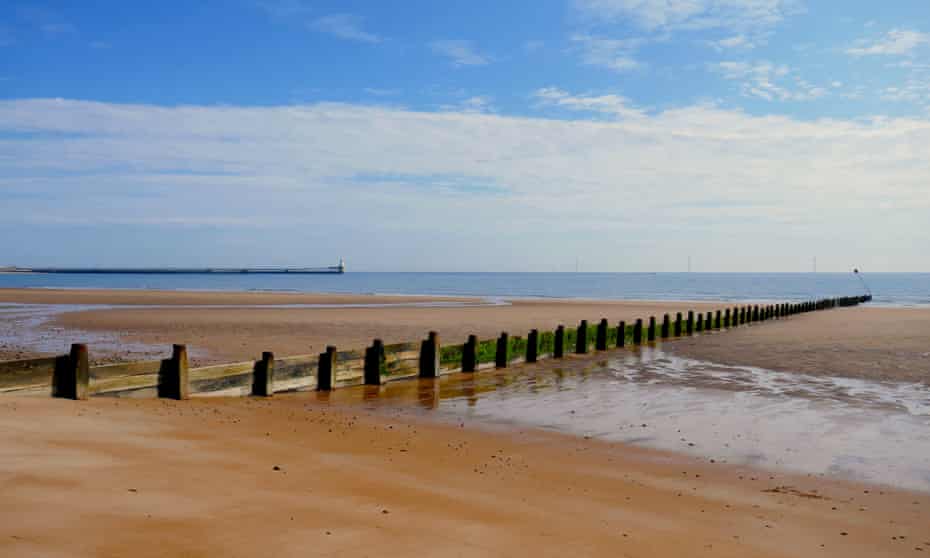
After my swim, I head for Seaton Delaval Hall (adult/child £8/£4), a newly restored National Trust property about five miles from Blyth. Architect John Vanbrugh, of Blenheim and Castle Howard fame, designed it in 1718 and bus X7 stops outside the gates every 30 minutes. An ongoing £7.8m restoration project includes a theatre-inspired playground and a new cafe in an old wood-beamed brewhouse that lay derelict for years.
Riotous parties featuring rope-dancing acrobats and raunchy masquerades were once a regular feature at Seaton Delaval. Now the central hall is empty, with twisted metal railings, melted by a fire in 1822, clinging to one spiral staircase. The sense of light and structure is more memorable than in most furnished houses. In the re-flagged basement, kids are cheerfully chasing each other through atmospheric up-lit vaults and corridors. In the re-landscaped south-east gardens, mirror cubes reflect clipped lime trees and willowherb. I stroll through the laburnum tunnel. Its green arches glow in the afternoon sun.
A five-mile loop from the hall, through fields and wooded valleys, passes close to St Mary’s Lighthouse. It stands on a small rocky island reached by a causeway – though it is covered by high tide when I get there. I keep a lookout for the bottlenose dolphins that have been spotted here recently and see sand martins flying over the beach.
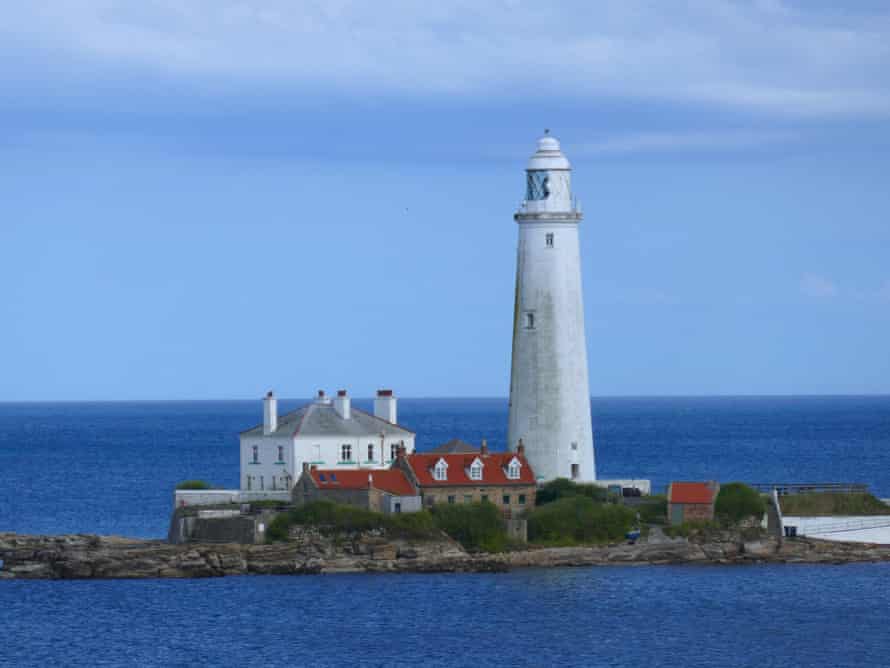
Nearby, the revamped 18th-century Delaval Arms launched its King Ælle microbrewery this summer. I sample tasters and drink an alfresco pint of Pale (£4.50, plus halloumi fries with salad and harissa yoghurt, £5.25) on a patio walled with sweet peas, surfboards and flaming crocosmia. Luckily, I don’t need to drive anywhere: I just hop on bus 308 back to Blyth, which runs until late. It’s a golden evening and I stroll a mile along the coast path to catch the same bus from Seaton Sluice, with its narrow grassy harbour ringed by little boats.
Outside the modern Commissioners Quay Inn, where I am staying, the setting sun is gilding the steel panels on the waterside Spirit of the Staithes sculpture. The inn looks out to sea across Blyth’s regenerating harbour, with its tall sailing ship and storage silos. Inside, the maritime-themed bar is buzzing with diners.

Next morning, there are luminous sea views from my sunrise-facing balcony. I take bus 1 out of town for a trip to three destinations that could each fill a more leisurely day. Getting off at Tweed Street among Ashington’s brick terraces, I walk five minutes past allotment sunflowers, over the A197 and freight railway, into the Queen Elizabeth II country park. Turquoise damselflies dart through lakeside bullrushes and meadowsweet in what was once Europe’s biggest colliery spoil heap.
Original headframes and winding houses from the Victorian colliery are the most eye-catching features at the Woodhorn Museum (adult £7, children free). The walk-through Coal Town, in a 21st-century visitor centre, recreates the lives of mining communities through the decades, ranging from underground accidents to pigeons and picnics. With a soundtrack of speeches and songs, squeaking rats and scraping metal, it is more moving and more entertaining than I expected. Upstairs a permanent gallery showcases 50 years of art by the local Pitmen Painters.
“Great choice, great breakfasts!” says the bus driver as he points the way to the Drift cafe in a former mine building by Cresswell Beach. Bus 1 stops in Cresswell near the Pele Tower, a small recently restored border castle. Nearby, the Drift’s Lindisfarne crab sandwiches and homemade cakes attract a varied crowd of dog walkers, families and Lycra-clad cyclists.
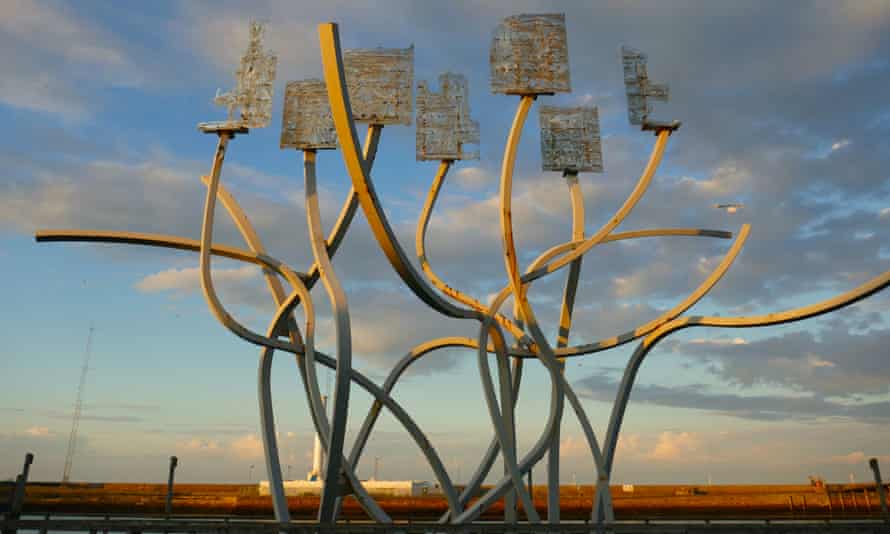
Cafe owners Duncan and Kate Lawrence have bought a vintage bus to form part of this foodie hub and are opening a new fish and chip shop later this year. I have gourmet peppers and sardines in Drift’s marquee and chat to Iain Robson, who manages the Northumberland Coast area of outstanding natural beauty. The AONB starts just north of here and extends to Berwick-upon-Tweed. Iain champions local buses and car-free itineraries for visitors.
The beach is minutes away on foot, through dunes laced with fragile harebells, starry bedstraw and magenta bursts of bloody cranesbill, county flower of Northumberland. Sanderlings (small wading birds) scamper through the surf and the long sands of Druridge Bay stretch out ahead of me. After a couple of idyllic miles, I turn inland and follow paths past Druridge Pools reserve and a medieval ruin to the village of Widdrington, where I catch bus X20 to Warkworth Castle.
The castle is one of several local attractions offering a 20% discount to visitors arriving by bus (adult £6.30/child £3.76). I arrive just before it closes and climb the stone steps for views along the wide River Coquet to Amble harbour.
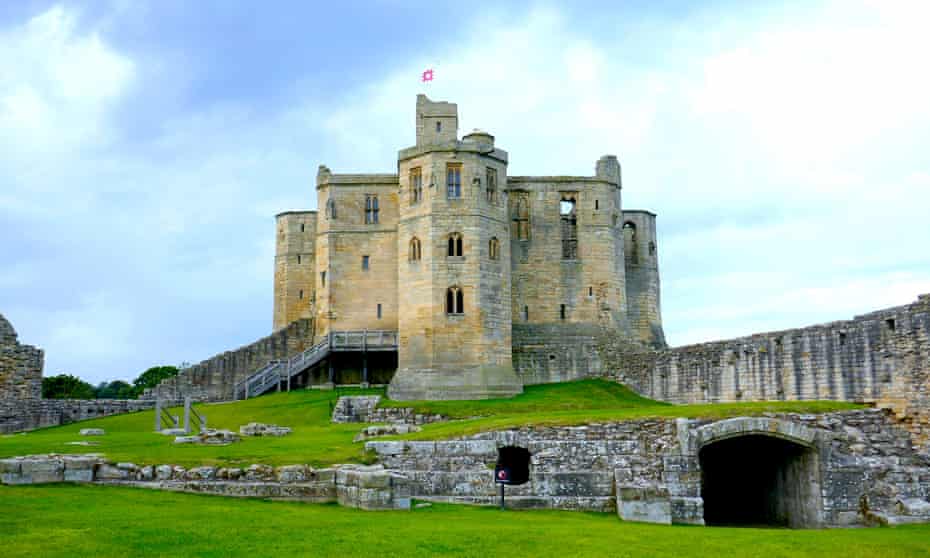
The Percy family, earls of Northumberland, lived in this castle and Shakespeare set scenes in both parts of Henry IV here, including Harry Hotspur’s plot to overthrow the king.
On my last day, I head to Blyth beach again through immaculate Ridley Park. The coast path and the Coast and Castles cycle route run past neat banks of germaniums. There are several playgrounds, a lively cafe, and a metal figure of Stan Laurel: his father owned Blyth theatre, where Laurel got his first walk-on parts. Round the leafy feeding station, I see 12 species of bird in three minutes, including a treecreeper circling the sycamore. Caboose, in a converted boathouse nearby, serves me lemony homemade hummus in a bagel. On the kelp-fringed shore of the tidal River Blyth, below the wooden deck, seagulls are lunching on limpets; one swallows a whole starfish.
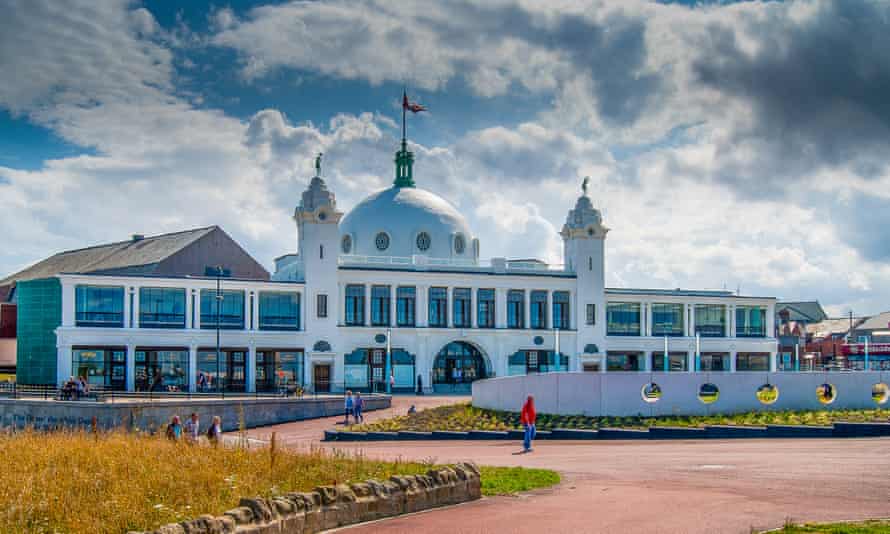
Reluctant to leave the coast, I catch bus 308, which takes a longer route than the fast X buses, to Newcastle to get the train. It is three minutes by metro (£2.10) from Haymarket, where Blyth buses come and go regularly, to Newcastle’s Central station. When I arrived, three days ago, I detoured down past the lantern-spired cathedral and 12th-century castle to the Tyne Bridge, where hundreds of noisy kittiwakes, the world’s most inland breeding colony, are nesting on ledges in the cliff-like granite columns. Out of the bus window now, Whitley Bay’s domed Spanish City glows white against bulbous grey clouds in the last gleams of seafront sunshine. As the bus turns inland, it starts to rain.





